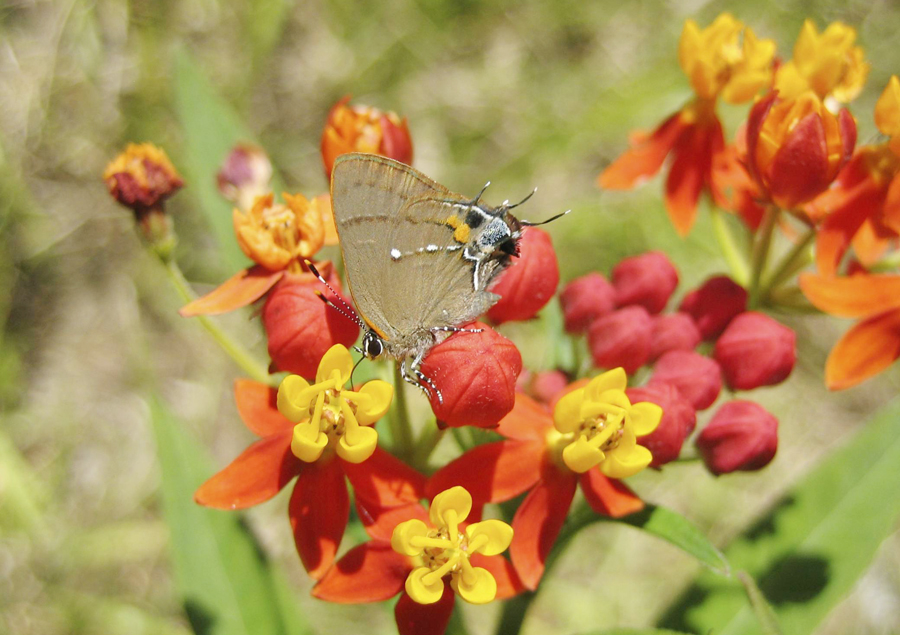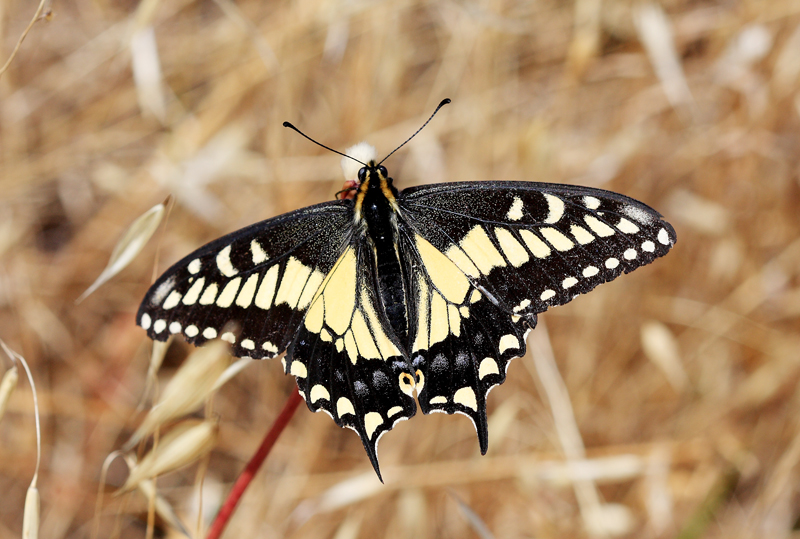Chris Grinter, 8. září, 2010 Zatímco pracuji na výraznější příspěvek, můžete pojmenovat motýl – a rostlin by mělo být docela snadné i. Extra bonus, pokud můžete hádat kraj (Stát nebude příliš působivé) ve které jsem získala tuto fotografii. To bylo pre-DSLR, but my old beat up canon point-and-shoot did manage to get some good ones.

Chris Grinter, 7. září, 2010 
Smutný příběh právě udělal jeho cestu až z Belize – the Americký Krokodýl Education Sanctuary má spálen k zemi. Na první pohled to byla jen nešťastná zpráva o výzkumu a ochrany zařízení, která byla ztracena v tragickém požáru. Že, nicméně, není celý příběh. Ukazuje se, že dav původních Mayů se rozzuřil a zapálil zařízení. Proč? Vzhledem k tomu, psychický řekl jim majitelé zavraždil děti a přivádí je k jejich krokodýlů!
Bylo to jako něco z filmu Frankenstein,” Cherie Rose řekl v úterý. “Kdybychom byli doma, oni by nás zabil. Říkali, že nás bude rozsekat a nás krmit krokodýly.”
Národní policie potvrzují, že domorodé Maya vesničané jednali o radu na duchovní, který řekl, že růže má něco do činění s srpna 7 zmizení 9-letý Benjamin vyrážka a jeho 11-rok-stará sestra Onelia.
Otázka se často přijde – “jaké škody je to opravdu?” – co se týká tohoto druhu anti-Vědeckého woo. Většinu času, tam opravdu není žádný damage, kromě peněženku. Ale, Každý jednou za čas, se něco tragického stane, a to všechno by se dalo snadno vyhnout se i nejmenšího kousku racionálního myšlení či uvážení. Psychická ve městě byl daleko a za bezohledné tím, že obviňuje těchto gringos – a měla by nést následky za své činy. Úmyslně obvinil dva nevinné lidi na smrt místní děti, který rychle za následek těžkou ztrátou osobních věcí. Naštěstí, Cherie a Vince Rose byli oba pryč v době, kdy záchranu krokodýla – oni mohou neunikly rozzlobený dav kdyby byli doma. Příklady tohoto vždycky se mi smutno, ale znovu nastartovat svou vášeň pro odhalovat tyto zloděje a zločince.
Navrhuji navštívit webové stránky ACES a blog a to buď darovat, nebo napsat poznámku podpory. Kdybych nebyl na mizině vědec sám, Já bych nabídnout větší podporu pro své úsilí na obnovu. Nyní – , který vám pomůže vzdělávat ty vesničany před se to stane znovu?!
Chris Grinter, 6. záři, 2010 Pro pravidelné čtenáře mého blogu jste již možná víte, můj postoj k monarchovi, ale catch up here if you’d like to. Yesterday I came across tento článek in the LA times – týkající se přezimování kolonie monarchů v Pacific Grove, CA. Tady, západně od kontinentálního předělu, there are quite a few monarchs that migrate to coastal California and Baja del Norte instead of traveling into central Mexico. Not all monarchs from California stay in the state, but there are dozens hundreds of known roosting sites (.pdf) up and down our pacific coast.
Pacific Grove has one of the best known localities and has built the local economy around their seasonal migrants (yet no one is deporting these Mexicans). Stručně řečeno, the town government hired an arborist to cut back dangerous eucalyptus growth. Why was that necessary? Zpět 2004 a limb from a diseased native-pine had fallen and killed an 85-year-old woman while on a walk with her grandchildren. In wake of the million dollar settlement paid to the family of the deceased the town decided to preemptively cut back old tree growth. But now everyone is running around screaming foul, the trees were trimmed také much. Ano, the precious homes of the monarchs were disturbed and it has riled the townspeople into a fury. What if the monarch’s don’t return?
Don’t worry, local filmmaker Bob Pacelli has a solution. Let’s just scatter as many eucalyptus trees as we can find into the grove to attract more butterflies.
In desperation, Pacelli came up with a plan: Find boxed trees — preferably blue gum eucalyptus — around 20 feet high and place them at strategic spots to help shelter the incoming monarchs. But the city has been slow to respond, Pacelli said. One official, Pacelli said, wrongly accused him of stepping on a butterfly, a violation of city code. No charges were filed.
For those paying attention, ano, the city council of Pacific Grove has a law on the books that imposes a fine of $1,000 on anyone who molests a butterfly. Good things monarchs don’t roost in catholic churches.
Continue reading Monarch Madness
Chris Grinter, on August 27th, 2010 This genius of the press is extra special, not for its difficulty, but for its redundancy. I found the same story carried on two separate sources, with different images – and both equally incorrect! I can imagine that it won’t take long for someone to point out exactly what’s wrong with these stories (hint, existují 2 things).
Here is the first from the Mirror.co.uk “Giant rare moth found in Devon”.

And the second from the Daily Mail online ” Rare Luna moth found on Devon…”

Chris Grinter, 24. srpna, 2010 A když jsem dohnat můžete sledovat některé strašidelný Isabella Rossellini re-nařídit styčné strategie na štěnice. Měli byste si také přečíst, pokud jste ho chytil již, the vynikající štěnice článek viz odlišit (a můj bývalý profesor) May Berenbaum.
[youtube=http://www.youtube.com/watch?v=MakIB_IJnu0&feature=search]
Chris Grinter, on August 14th, 2010 Dnes večer, pokud jste v San Franciscu, měli byste se vydat do baru Showdogs (poblíž SoMa) pro skeptiky v hospodě s ctihodným Jamesem Randi! budu přítomen, spolu s několika přáteli entomology. Zkuste to Facebook odkaz – ale pokud se to nepodaří, akce začíná ve 21 hodin.
Pokud nejste v SF, místo toho si vychutnejte nějaká videa Randi!
[youtube=http://www.youtube.com/watch?v=M9w7jHYriFo]
Chris Grinter, dne 10. srpna, 2010 
Na obrázku je černě žilkovaná bílá (Aporia crataegi ssp), and it is currently being returned to the Korean Institute of Biological Resources. Půjčky se vracejí, jak by měli být, každý den – a může se dokonce počítat na tisíce exemplářů. I myself have a few hundred moths out on loan from a handful of museums that are pending research. As soon as I finish my work (or request an extension), the specimens are promptly returned accompanying my paper. Unfortunately it is not a rare occurrence where loans have gone out, and remained out without permission, for decades. At least in one case to my knowledge (names and institutions redacted) the loaned specimens were out so long they created a small international incident. Foreign ambassadors had to formally request the specimens, which had to be presented in person by our ambassador to their country.
This butterfly, nicméně, I don’t believe was part of a loan. So why is it going back to Korea?
Continue reading A Disturbing New Trend?
Chris Grinter, on August 9th, 2010 This one is just také easy. The billboard is on I-35 south of Burleson, Texas.

I don’t know the true provenance of this image, but it came my way from Omar Bocanegra via Mike Quinn on the Texas Lepidoptera list-serv.
Chris Grinter, 8. srpna, 2010 
Narazil jsem na (ne na StumbleUpon) Tyto barevné SEM obrázků na Telegraph webové stránky dnes. Jsem především rád tento obraz Calliphoridae larva (Protophormia sp.) který se zdá více z C-hodnocené sci-fi filmu, než příroda. Připomíná mi to jak rozmarné Star Wars charakter a Muppet zároveň. Náhlý odchod ze standardního savčí stavbě těla je hmyz hlavními kandidáty na jiného světa cizinců. Hmyz musí být použity jako vodítko pro filmy, jako je okres 9, Hvězdná pěchota, Cizinec, Galaxy Quest… jen abychom jmenovali alespoň některé poslední doby. Jsem si jist, že další, více dobře akreditovanou, sci-fi mágů tam může myslet i lepšími příklady. Ve stejném duchu si vzpomínám, tyto obrazy vyštěkl jsem na Cerambycidae brouka níže – Kaktus tesařík gigas. To bylo v prvních dnech své nové kamery, takže nemůžu ohlížet na ně jako perfektní záběry.
Continue reading Muppet Monsters
Chris Grinter, on August 6th, 2010 
Here is a hill-topping male Papilio zeliacon, or Anise swallowtail. This butterfly is widespread in the western Pacific states and is probably much more common than it once was. After the introduction of fennel (Foeniculum vulgare), and subsequent escape from horticulture, the anise swallowtail took hold as a common California butterfly. Perhaps before this plant overtook our roadsides the zelicaon may have been restricted to the Sierra foothills, now you can find it across gardens in all of California. Ačkoli, things seem to be reversing themselves in southern CA where this butterfly is disappearing from urban areas. Recent introduction of the gypsy moth to the Ventura/LA areas has initiated insecticide spraying regimes – not to mention the appearance of an invasive parasitic Tachinidae that loves larger leps. Out on the east coast this parasitic fly and heavy spraying has extirpated the Imperial moth (Eacles imperialis) from much of it’s range, leaving it endangered in most of New England.
Continue reading Butterfly Porn
|
Skepticismus
|








